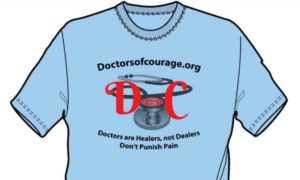Many doctors read Medscape for information pertaining to their practice. Jan. 18, 2019, Medscape released a CME activity for practitioners entitled
Opioids for Chronic Pain Better Than Placebo?
First, the authors spout data from an editorial written by someone who receives payments from the Department of Justice at various federal and state levels. So really, how trustworthy is his data, such as:
More than 90% of the 12 million people who abused opioids in 2017 misused prescription opioids specifically.
The point of activities in Medscape is to teach something to the participating physicians that they then test you to see if you learned the necessary training to give you the CME’s. The learning task here was:
How effective are opioids for chronic non-cancer pain?
They then provide a standard conventional medicine review and meta-analysis to provide the answer they want the physician to learn. The problem with the standard conventional approach is that the data usually proves whatever they set out to prove—in this case, that opioids are not effective for chronic non-cancer pain.
The conclusion they reach is: For patients with chronic non-cancer pain, the benefit of opioids may not outweigh the drugs’ adverse effects.
The studies they used in the meta-analysis used a maximum of 45 MME’s (morphine equivalents) per day and involved 60 days.
In real terms, that means:
45 mg Hydrocodone, or 4 10 mg Lortabs
30 mg oxycodone, or 2 15 mg oxycodone, or 3 10mg Percocet/day
12 mg methadone, or 2-3 5mg per day
The results of the study was that the treatment was statistically significant in pain reduction and increased physical activity (meaning that they did adjust the numbers in the appropriate direction). But then they claim these improvements were not “clinically relevant” (they didn’t reach the numbers on the visual analogue scale that the interpreters considered “clinically relevant”) and were associated with the increased adverse effect of vomiting. In other words, they reached the conclusion they wanted to reach.
And so what was their conclusion?
“So for us, this just reinforces that opioids should not be first-line therapy for the management of chronic non-cancer pain,”
Significant Potential for Harm
They then proceed to espouse the standard “anti-opioid” propaganda.
- Opioid use is associated with significant potential for harm, including diversion, addiction, overdose, and death.
- The effect of opioids on chronic pain is unclear.
- Most patients who are prescribed opioids for chronic non-cancer pain will not benefit from such therapy.
- “Given the clear risk of serious harm, opioids should not be continued without clear evidence of a clinically important benefit.”
Conclusion
To receive CME from the activity, they then asked 2 questions about a case report of a 58 y/o woman with low back pain who asks for her opioid dose to be increased, and the job of the physician is to “intervene” with information to this patient. The correct answers for the test are to tell the patient:
- ¾ of heroin users begin opioid misuse with prescription drugs.
- The significant outcome in the study on opioids was an increase in vomiting.
After the test, the physician then gets an evaluation that includes:
- This activity will assist in the improvement of my: a. Competence b. Performance c. Patient outcomes.
- I plan to make the following changes to my practice: a. Modify treatment plans b. Change my screening/prevention practice c. Incorporate different diagnostic strategies d. None; the activity validated current practice
- This activity supported achievement of each of the learning objectives: a. Quantify the problem of opioid misuse in the US. b. Evaluate the efficacy and tolerability of opioids for chronic non-cancer pain c. Identify implications to the healthcare team.
- The content learned from this activity will impact my practice
- Does this activity promote improvement in healthcare and/or patient outcomes (Yes or No)
So basically, with educational CME’s like this, the standard of care is being changed in medicine in the direction of avoidance of opioids for pain. As more of the doctors get indoctrinated this direction, there will be less opioids used, more chronic pain patients called “drug seekers”, more doctors who actually treat appropriately be attacked by the government, more push to illegal drugs, more deaths…need I go on?
And the answer to the problem—the REAL cause of drug abuse that I teach—gets ignored. And as long as that is the case, accept the anti-opioid movement as the future norm.
Linda Cheek is a teacher and disenfranchised medical doctor, turned activist, author, and speaker. A victim of prosecutorial misconduct and outright law-breaking of the government agencies DEA, DHHS, and DOJ, she hopes to be a part of exonerating all doctors illegally attacked through the Controlled Substance Act. She holds the key to success, as she can offset the government propaganda that drugs cause addiction with the truth: The REAL Cause of Drug Abuse.
Get a free gift to learn how the government is breaking the law to attack your doctor: Click here to get my free gift

